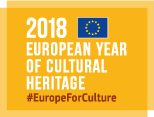CLIC - CHIA Circular Heritage Impact Assessment services and toolkit
Challenge: WHY the innovation has been developed? What problem is addressed and why has not been not solved before?
Cultural heritage represents a valuable and almost perpetual resource for European identity, attractiveness, economic growth and citizens wellbeing and well-living. However, its preservation and use presents many binding barriers (architectural, governance, financial etc.) resulting in many heritage buildings and sites abandoned, degraded or underused: an urban ‘waste’ that can be turned into a precious resource. Creative and cultural entrepreneurship can boost heritage regeneration with impacts on the economic growth, new jobs creation, enhancement of social cohesion and urban revitalization, but needs specific support to scale-up and grow. CHIA aims at satisfying these needs through supporting services and a toolkit for creative and cultural organizations and heritage-focused entrepreneurs to assess heritage projects and business models, highlighting impacts and areas of potential improvement to enhance up-scalability and accountability to public and private investors.
Solution: WHAT the solution is about? HOW it goes beyond the state of the art?
CHIA represents an innovative proposal for impact assessment in cultural heritage sector for adaptive reuse projects in the perspective of the circular economy that can be adopted by creative and cultural organizations, social entrepreneurs and other industry practitioners. CHIA provides focused business services and a practical tool to assess the impacts and performances of cultural heritage adaptive reuse projects under the framework of the circular economy. CHIA is based on a heritage impact assessment methodology that considers historic-cultural attributes and values, as well as economic-financial self-sustainability, economic spillovers, social and environmental impacts. The toolkit is based on assessment criteria and a set of quantitative and qualitative indicators that define three levels of circularity: L-I Cultural values conservation; L-II Circularity of building construction; L-III Multidimensional impacts generated in the area/district/city/region. Heritage reuse projects are scanned through criteria/indicators, making evident actual impacts and areas of potential improvement.
End-users and examples of uses: WHO will beneficiate/ is beneficiating from the solution? WHERE and HOW the solution has been adopted? How will impact people or end-users? Add as more as possible examples of market and society uptakes
CHIA services and toolkit support particularly non-profit organizations and social enterprises to become more accountable for the impact investment funds category, which decisions are grounded on clear and transparent evaluation of financial returns ‘blended’ with social impacts. CHIA will be tested in real environment with organizations based in the cities of Salerno (Italy), Rijeka (Croatia) and Amsterdam (Netherlands) and in Västra Götaland Region (Sweden).
Future possibilities: Future market perspectives when the innovation will be fully available or in use
CHIA will be demanded by private and public funding bodies (e.g. Foundations, banks, national heritage agencies) as well as heritage managers, to clearly identify social, environmental, economic, cultural impacts of cultural heritage adaptive reuse alternative projects and orient investment choices towards circularity. Furthermore, the evaluation of impacts is more and more required also by private investors, to understand the impacts of business activities in which investments are made. Social purpose organizations and impact investors link their choices to the positive impacts generated by ocially-oriented business activities, that in turn are willing to demonstrate their contribution to sustainable development.
References for more information (eg. website, social media)
Contacts:
Antonia Gravagnuolo (a.gravagnuolo@iriss.cnr.it)
Application sectors:
- Circular models for CH
Objectives:
- Market/business development
- Supporting environment (Infrastructures, intermediaires, new business opportunities)
RRI Dimensions:
- Public Engagement
- Governance
Communities:
- Circular, sustainable and creative cities

